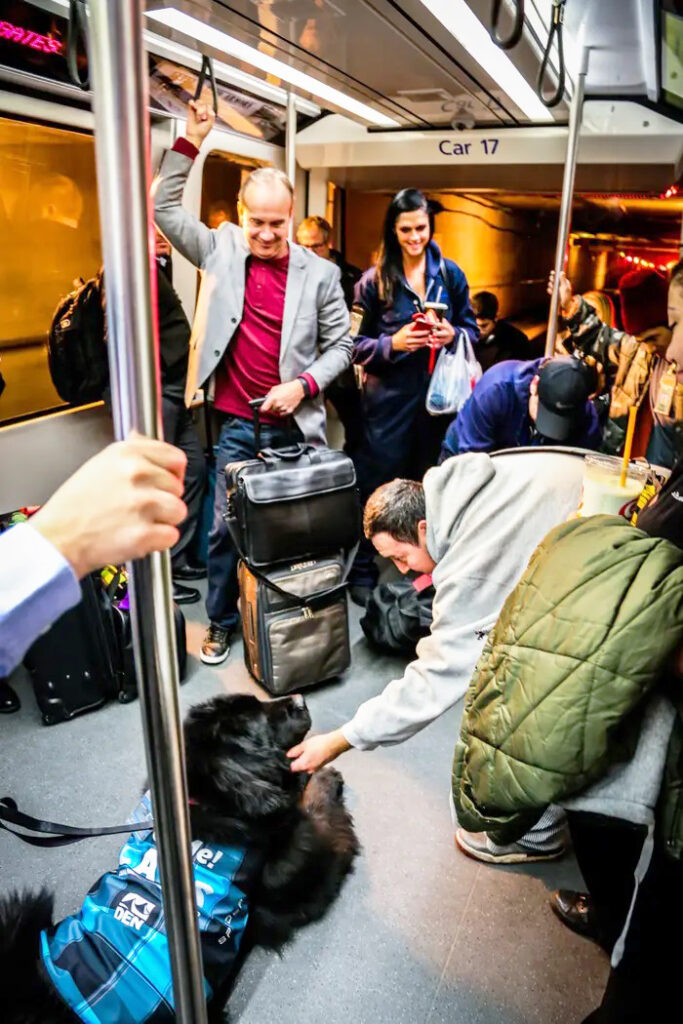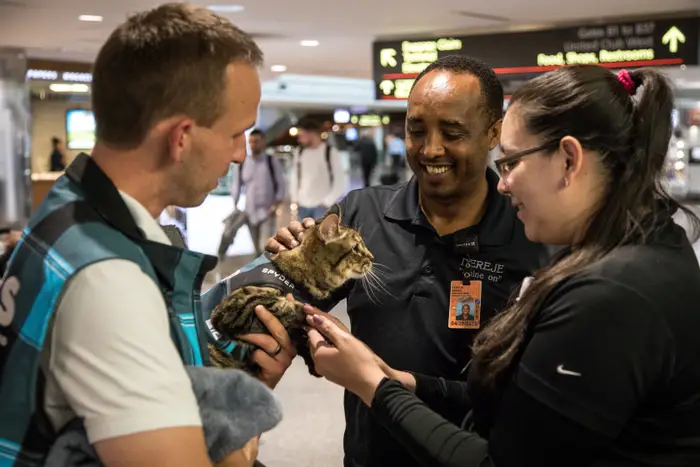Be my pet
Where do people get nervous? At the hospital, at the airport and apparently at college. So we all know they need a support animal to keep them distracted, calm and business like for the smooth functioning of the enterprise. So Istanbul is one of hundreds of airports that circulate ”therapy animals” (mostly dogs) to pacify those that are lost or confused or just angry and frustrated by their confusing travel experience. Six-year-old Kuki and one-and-a-half-year old Alita recently joined the staff of Istanbul Airport, one of the busiest in the world, with a mission to provide solace for stressed travelers. At international departures just before passport control, the two dogs welcome passengers, some who are in a hurry, some feeling the tug of anxiety and some hanging around to say good-bye to loved ones. Ali Bahtiyari, who was travelling outside his native Iran for the first time, was amazed as soon as he saw Kuki — a playful, dark brown Lagotto Romagnolo breed with thick curly fur, and Alita — a black and white Border Collie with expressive eyes. “I’ve been in Istanbul for three to four days. I walked a lot. I was physically exhausted. But seeing these dogs here produced so much endorphin. I’m not tired at all,” the 31-year-old said, petting the two dogs before catching his flight back to Tehran.
Having a medical condition that requires you to spend time in the hospital can be stressful for the mind and the body. Northeast Georgia Health System (NGHS) is using therapy dogs to help change that. Your blood pressure drops, you feel less stressed and tense, and you’re in a better mood. Those are tangible benefits that you can feel, and they’re also benefits that have been researched and noted in the medical field. That’s part of the reason why many hospitals and health systems, NGHS included, are bringing therapy dogs and other forms of pet therapy into the mix. Led by human volunteers, therapy dogs regularly visit NGHS, interacting with patients and their loved ones. This does more than provide a warm and fuzzy diversion—it offers our patients a complementary therapy that works alongside their medical care to help improve their overall wellness. The therapy dogs that visit NGHS are part of a growing number across the United States and the world. In the United States alone, there are more than 50,000 therapy dogs working in hospitals and other settings, including schools. A study published last year in the medical journal “PLoS One” for example, found that patients visiting the Emergency Department who interacted with a therapy dog for as little as 10 minutes experienced reduced pain, anxiety and depression.
Colleges, like Cleveland State in the video below, have also found that having dogs wandering the campus takes the hustle and stress out of a student’s day and gives them something to fuss over instead of their homework and their competitive fellows.
Therapy animations
My neighbor got a diagnosis from a psychiatrist and decided to get an Emotional Support Animal.
His choice? A skunk. His diagnosis? Sociopath.
I joined an emotional support group for people without pets…
But they kicked me out for talking about my felines.
After many attempts to lose weight, my father joined a professional diet group. The family was delighted that now he would be able to get his weight under control. However when he came home from his first session with the group, he went straight for the refrigerator. “What happened?” asked my mother. “I’m starving,” dad replied. “All they did was talk about food.”
Support bacteria – they’re the only culture some people have.
June 6th birthdays
1955 – Sandra Bernhard, 1952 – Marsha Blackburn, 1959 – Amanda Pays, 1975 – Stacy Keanan
1956 – Bjorn Borg 1935 – Dalai Llama, 1967 – Paul Giamatti, 1980 – Pete Hegseth




